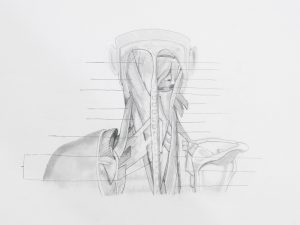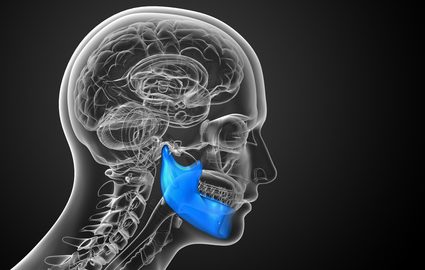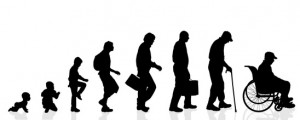What is the Tempomandibular Joint (TMJ)?
The Tempomandibular joint (TMJ) is more commonly known as the jaw joint, and is located directly in front of the inner ear and below the temple. It is used many times throughout the day when we talk, yawn, eat, drink and chew, but only becomes noticeable when these activities become painful or difficult. If you place your fingers in front of your ear and slightly lower, then open and close your mouth, that is the TMJ you are feeling.
What Causes the the Jaw to become Painful?
TMJ dysfunction can stem from a number of different causes. The joint is complex, consisting of a fibrocartilage disc that sits between the joint surfaces. The joint is densely innervated with sensory nerves and therefore can be a pain sensitive structure if damaged or irritated. Most common causes include:
Derangement or displacement of the disc, muscle dysfunction and imbalance, bruxism

(grinding of the teeth at night, leading to increased pressure and asymmetrical movement) or an occlusal problem with the teeth. TMJ dysfunction can stem from a history of motor vehicle accidents and associated whiplash and neck pain, a previous history of jaw or dental surgery, stress and anxiety causing tension and grinding of the teeth or poor cervical posture, putting the joint at a disadvantage biomechanically.
Other causes may include movement or dislocation of the disc between the joint or wear and tear related to arthritis. There are no comprehensive explanations that account for all of the causes of TMJ dysfunction. In many cases the onset of pain comes on slowly and without a direct or obvious injury. In these cases, symptoms likely arise from problems with the muscles of the jaw or with the joint itself.
What does TMJ dysfunction feel like?
- Pain or tenderness in or around the ear when you eat, speak or yawn
- Pain or tenderness in the face, around the jaw, neck or shoulders
- “Locking” in the jaw in the open or closed position
- Clicking or clunking when opening and closing the mouth
- Difficulty eating hard or chewy foods
- Deviations or shifting of the jaw when opening and closing the mouth
- Headaches
- Limited opening of the jaw and associated pain with yawning
Other signs and symptoms include toothaches, headaches, neck aches, dizziness, earaches, hearing problems, upper shoulder pain, and ringing in the ears (tinnitus).
How Can Physiotherapy Help TMJ Dysfuction??
TMJ dysfunction is a less common issue seen in Physiotherapy compared to back or shoulder pain, and often some people are unaware that a Physio can help. The jaw is a joint just like any other in your body, and is put through much more stress throughout a day with talking, eating and speaking. Physiotherapy can help restore range of motion, improve the mechanics of the joint through mobilizations and motor control exercises, control pain and provide useful tips on bad oral habits! A Physiotherapy assessment of the TMJ will include:
- Thorough history of the present problem, symptoms, aggravating factors and oral habits (grinding, clenching, etc)
- Postural assessment
- Examination of the jaw to assess range of motion, mobility, pain sensitive structures and muscle tone
- Examination of the cervical spine, with particular emphasis on the upper cervical region
- Assessment of motor control and movement patterns of the jaw
- Treatment focused on joint mobilizations of the TMJ and upper cervical spine, motor control exercises of the TMJ, postural correction exercises and pain relieving modalities, such as acupuncture or heat therapy have been shown to be effective in the treatment of TMJ disorders
Claire Corbett, BScKin, MScPt
Registered Physiotherapist
The Physiotherapists at Oakville’s Palermo Physiotherapy and Wellness Centre treat and assess the TMJ using a variety of techniques that are dependent on the individual. Our Oakville Physio’s use range of motion techniques, joint mobilizations, soft tissue work, acupuncture and exercises to help with TMJ stiffness, TMJ “clicking”, TMJ pain etc. We can work with your dentist or orthodontist to with your jaw issue. Contact us to see how we can help you with your TMJ issues.


